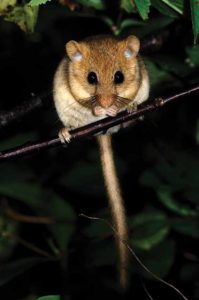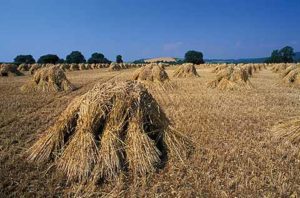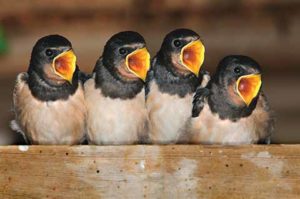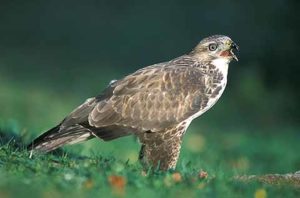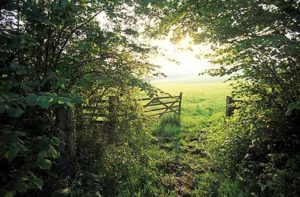The Dorset countryside in July
Published in July ’18
July is often the warmest month of the year in Dorset, with long days and balmy nights. Biting insects abound this month, including such nuisances as horseflies, midges, mosquitoes and ticks, all after our blood! After dark, the air comes alive with millions of night-flying moths and other invertebrates, all fair game for the hunters of the night, bats. The birdsong which has dominated the sounds of the countryside since April now fades almost to silence, apart from occasional twitters from yellowhammer or whitethroat lingering in country lanes. July marks the beginning of the summer moult for most birds in the Dorset countryside. As they shed feathers for new plumage, flying abilities are weakened until the moult is complete. That is why most birds remain silent and hidden away in the undergrowth. This annual moult neatly coincides with a super-abundance of both insect and vegetable food.
In the west of the county, the plaintive cries of young buzzards may still be heard as they call for their parents to feed them. Swallows and martins may still have nestlings. As these youngsters leave the nest, they become targets for sparrowhawk and hobby. Juvenile swallows will frequently return to their nest sites on and off for up to a couple of weeks after their first flight.
Few other counties in England are able to claim a greater variety of invertebrates than Dorset. The county is well known amongst entomologists for its diverse range of butterflies and dragonflies, and July is the best month to see such an array of them. At the beginning of the month, numbers of silver-studded blues will peak on the Dorset heathlands, where they lay their eggs on gorse and broom. In the woods, two hairstreak butterflies are on the wing now: the purple and whiteletter hairstreaks. Find both of these charming insects at Alner’s Gorse near Hazelbury Bryan. On chalk habitats look out for both the Adonis and chalkhill blues, especially towards the end of the month. Marbled white colonies often build up to vast numbers of insects on unimproved grassland or on roadside banks and dual carriageways. In the woods of Dorset, the silver washed fritillaries and white admirals feed on bramble flowers and hemp agrimony. Elsewhere, peacock caterpillars devour the leaves of stinging nettles in large clusters of insects before pupating. This month, on the coast just about anywhere between Old Harry and Weymouth, you can find Dorset’s very own butterfly, the Lulworth skipper, so called because it was at Lulworth that this insect was first identified
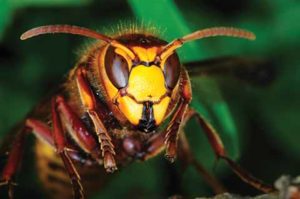
Although hornets are formidable-looking beasts, they are in fact just the bumblebees of the wasp world, and very reluctant to use their stings on humans unless defending their nest
In the south-east of the county, the heaths, which have appeared like barren, dull landscapes for much of the year, now burst into life with a succession of heathers. Four species of heather occur in the county: cross-leaved heath, bell heather, ling and Dorset heath. These lowland heaths are among some of the rarest habitats in the world and just about every creature you may encounter there is nationally uncommon.
Dragonflies feed on smaller airborne insects and it can be fascinating to watch them diving in and out of the sunbeams, attacking the columns of gnats in the late afternoons. Dorset has a larger variety of dragonflies and damselflies than most other counties of England, with the exceptions of Hampshire and Surrey. This is due mainly to the large areas of lowland heath around the Poole basin, where several acidic-loving species occur in addition to the commoner, more widespread insects. The slower reaches of the Stour between Wimborne and Bournemouth are especially productive for dragonflies during midsummer. The scarce chaser occurs here, as well as the banded demoiselle and the exquisite white-legged damselfly.
Mammals in the county are changing their habits, too, as fruits and nuts swell to provide an abundance of food. In woods, copses and hedgerows around the county, dormice are active. The dormouse is the longest-living rodent and can reach ages in excess of six years. This longevity is offset by the fact that 60-70% of dormice die during winter hibernation. If the weather is dry, badgers, unable to dig for earthworms, will turn their attention to soft fruit in gardens or even upturn dustbins as they search for food scraps. Young foxes of the year begin to show aggression towards each other as the time to disperse approaches. The hoarse, rasping barks and yelps of these young mammals carry across the countryside in the evenings as they quarrel and scrap with each other. It is during July that both badger and fox cubs begin to drift away from the security of their family groups, finally becoming independent next month.
In the sultry, muggy atmosphere of late July, the landscape appears faint in the heat haze with the likelihood of the onset of sudden thunderstorms. Wildlife in the countryside is now quiet, apart from the drone of insects. This is the time for invertebrates to take centre stage in Dorset, both during daylight and after dark, for the next few weeks of high summer.
